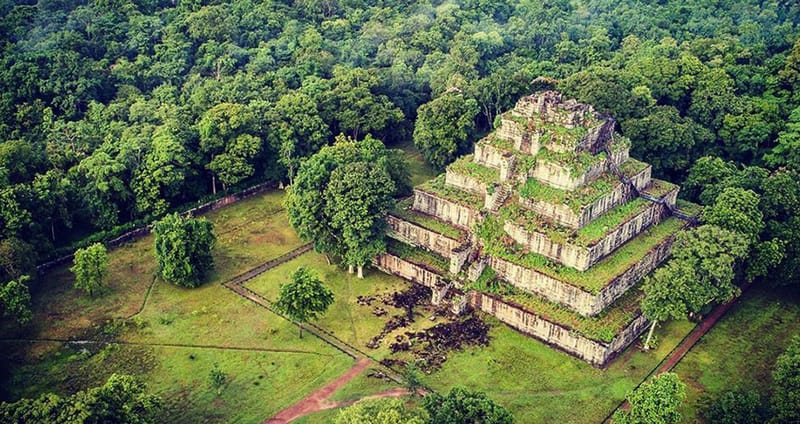Koh Ker Temple

Koh Ker Temple, located about 120 kilometers northeast of Siem Reap, Cambodia, is a fascinating and lesser-known archaeological site that once served as the capital of the Khmer Empire during the reign of King Jayavarman IV (928–941 CE). Koh Ker is part of a larger archaeological area that includes numerous temples, but it is best known for its unique pyramid-shaped temple, Prasat Thom, which stands as one of the most distinctive structures of the Angkorian period.
Koh Ker was briefly the capital of the Khmer Empire, a role it held for just a few decades, but it left behind a lasting legacy in the form of grand architecture and intricate carvings. The most iconic feature of the site is the Prasat Thom pyramid, which rises to a height of 36 meters (118 feet) and is built on a seven-step base, giving it the appearance of a stepped pyramid. The temple was dedicated to the Hindu god Shiva and is surrounded by a series of smaller temples and structures, each with its own unique features. Visitors can climb to the top of Prasat Thom for a panoramic view of the surrounding jungle, offering a glimpse into the grandeur of the site.
Apart from Prasat Thom, the Koh Ker complex includes several other temples, many of which are still in a state of relative preservation compared to more famous sites like Angkor Wat. Some of the temples at Koh Ker are dedicated to Hindu gods, while others have Buddhist influences, showcasing the blend of religious practices during the Khmer Empire’s rule. The ruins are spread out over several square kilometers and include other noteworthy structures such as Prasat Krahom, Prasat Damrei, and Prasat Lingar, which are adorned with carvings and inscriptions that tell the stories of the time.
Koh Ker remains a quieter, less touristy destination compared to the bustling Angkor Archaeological Park, making it an ideal spot for those looking to explore ancient temples without the crowds. The site is also surrounded by dense jungle, adding to its mystique and making it a serene place to visit for history and nature enthusiasts alike.
Although Koh Ker was not as prominent as Angkor in terms of its long-lasting influence, it provides valuable insights into the early period of the Khmer Empire and is an excellent example of the architectural and artistic achievements of the time. For those seeking a deeper understanding of Cambodia's rich cultural heritage, Koh Ker offers a unique and off-the-beaten-path experience.